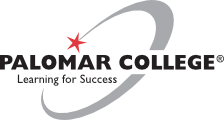
Course Outline
N GEOG 900 - Introduction to Drone Safety and Applications
Fall Semester 2018
Basic Course Information
Courses numbered 1 - 49 are remedial or college preparatory courses which do not apply toward an A. A. Degree and are not intended for transfer. Courses numbered 50-99 apply toward an AA Degree, but are not intended for transfer. Courses numbered 100 and higher apply toward an AA Degree and/or are intended for transfer to a four-year college or university.
N - Non Credit
N GEOG
Introduction to Drone Safety and Applications
Number of Semester Hours
18.000
0.000
Catalog Description
A survey of the regulations governing small unmanned aircraft systems (sUAS) operations and safety considerations. Existing and emerging trends of sUAS applications in various industries will also be discussed.
Specific Course Objectives
Objective
Upon successful completion of the course, the student will be able to:
- Identify the Federal Aviation Administration (FAA) regulations governing small unmanned aircraft systems (sUAS) operations;
- List the safety considerations when operating a small unmanned aerial vehicle;
- Establish a set of "best practices" when operating an sUAS;
- Lst ways to verify that the small UAS is in condition for safe operation;
- Identify the effects of weather on small UAS operations;
- Discuss existing and emerging trends of sUAS applications in various industries.
Methods of Instruction
Methods of Instruction may include, but are not limited to, the following:
Discussion
Learning Modules
Lecture
Videos/Film
Content in Terms of Specific Body of Knowledge
- Basic sUAS Safety Principles and Regulations
- Safe, Legal, and Ethical Operation of an sUAS.
- Recreational vs. Commercial Operators
- Federal, State, and Local Regulations
- Privacy Issues
- Academy of Model Aeronautics (AMA) Safety Code.
- Crew Resource Management
- Pilot in Command
- Qualifications
- Responsibilities
- Person Manipulating Controls
- Qualifications
- Responsibilities
- Visual Observer
- Qualifications
- Responsibilities
- First Person View Systems
- Requirements and Limitations.
- Range, Altitude, Weight, Speed.
- Failsafe, Stabilization, and Autopilot Systems
- Requirements and Limitations.
- Range, Altitude, Weight, Speed.
- The National Airspace
- Controlled
- Identification
- Operational Requirements
- Uncontrolled Airspace
- Identification
- Operational Requirements
- Pre-Flight Considerations
- Inspection and Recommended Maintenance.
- Loading Considerations.
- The Effects of Weather.
- Emergency Situations
- Abnormal and Emergency Situations
- Accident Reporting Requirements.
- Mission Planning: Best Practices
- Applications
- Surveying.
- Mapping.
- Environmental Monitoring.
- Engineering.
- Precision Agriculture.
- Structural Inspection.
- Photography and Videography.
- Remote Sensing and Image Analysis.
Textbooks/Resources
Textbook
Farnsworth, Peter
Drone Safety Field Guide, ed.
CreateSpace Independent Publishing
2016
Assignments
Examples of reading materials are case studies of drone applications for individual entrepreneurs, for local governmental agencies, for profit businesses, and for not-for profit organizations.
Students will turn in a case study analysis (2 - 3 page essay).
Students will analyze multiple flight situations and predict outcomes. This will require them to synthesize lecture and reading information, and challenge their critical, analytical skills.
Outside assignments will include reading texts, review of lecture notes, writing assignments, video assignments, and exam preparation.
Methods of Assessment
Evaluation Method
- Standardized instrument objectively measuring student knowledge
- Competency based written and practical tests which demonstrate the student's ability to apply skills and concepts learned to minimum standards established by the instructor.
- Standard instrument measuring student subjective opinion
Repeatability
Yes
Contact Person
Cheung, Wing H.